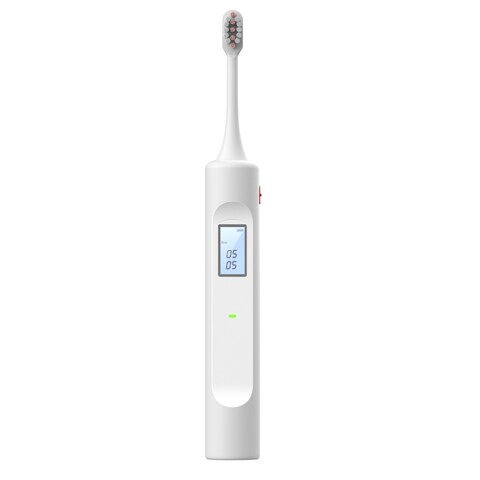Blood
Breathalyser toothbrush that detects blood alcohol levels to hit shelves
A world-first breathalyser toothbrush that tells you if you are over the limit to drive the morning after drinking is set to hit shelves next year.
The “brushalyser” will allow drivers to find out their blood alcohol levels as part of their morning routine before getting behind the wheel.
As many as one in four adults admit to driving the morning after a night of drinking, according to new research by insurance provider Direct Line.
This rises to half for younger adults, aged 35 or under, the survey of 2,000 adults revealed.
The police arrested 8 per cent more people for drink driving offences during “the morning period” in 2022 compared with 2021, according to data from Freedom of Information requests.
London residents were the worst offenders with a third admitting to driving the “morning after”, followed by Cardiff and Birmingham.
People in the North West and South East of England were also above average, with 27 per cent of adults admitting to driving the morning after a night out, while Scotland had the lowest rate.
The device is expected to go on sale for a similar price to a regular electric toothbrush
The toothbrush, which has been commissioned by Direct Line and designed by Simply Designed Works, incorporates a breathalyser in a “world-first oral innovation”.
It will allow users to blow into the bottom of the toothbrush in the same way as a breathalyser. The device will flash red and vibrate if over the limit, and glow green if it’s safe to drive.
The legal alcohol limit for driving in England, Wales and Northern Ireland is 35 micrograms of alcohol per 100 millilitres of breath. In Scotland it is 22 micrograms.
It is expected to cost the same as a regular electric toothbrush to stay within people’s budgets.
Dr Joeran Koechling, a drink driving expert and author of a recent University of Cambridge study into why people drink and drive, found “drivers are strongly misjudging their alcohol levels”.
“People consider themselves fit to drive when, in fact, they have dangerous levels of alcohol in their blood,” he said.
“I’ve spent years studying road casualty data and while it’s always been concerning, the fact that people are openly confessing to taking to the roads while feeling under the influence of alcohol is shocking.”
A study published in the Harm Reduction Journal, led by Dr Koechling, found that as many as 53 per cent of young adults who had been socially drinking “exceeded the legal driving limit whilst under the impression to be still permitted to drive”.
He said the concept of a “brushalyser” would “embed breath testing into a drivers’ morning routine”.
“Even the visual reminder of seeing the breathalyser section on the back while you’re brushing your teeth acts as a prompt to take stock and test your alcohol levels,” he added.
‘Mission to make roads safer’
Road traffic accidents are the leading global killer of people aged five to 29 years old, according to the World Health Organisation, which has attributed drink-driving as a main cause.
The latest estimates from the Department for Transport suggest as many as 280 people died in Britain in 2021 because of road accidents where at least one person was drink-driving.
Lorraine Price, head of motor insurance at Direct Line, said: “We’re on a mission to make roads safer for everyone and it’s clear drivers need a wake-up call when it comes to drinking and driving.
“The breathalyser toothbrush aims to remind people they could be over the limit the morning after drinking, and ties breath testing seamlessly into Brit’s morning routines.”
Ms Price also suggested buying a breathalyser for the car.
The advice from the police is to avoid alcohol altogether if you plan to drive.

